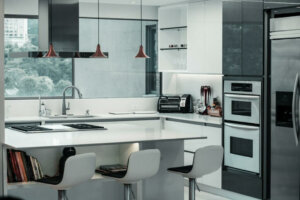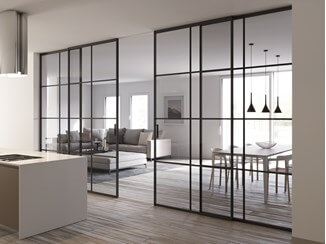How to Create Multifunctional Spaces in Your Kitchen

In the hustle and bustle of modern life, the kitchen has evolved into more than just a place to cook. It serves as a hub for socializing, working, and entertaining. Creating multi-functional spaces in your kitchen allows you to maximize its potential and adapt to various needs seamlessly.
Here are five innovative ways to achieve this without extensive remodeling.
Why the need for multifunctional spaces in the kitchen
The need for multi-functional spaces in the kitchen stems from the evolving dynamics of modern living. As our lifestyles become increasingly fast-paced and multifaceted, the kitchen serves as more than just a cooking area—it’s a central hub for various activities. By creating multi-functional spaces, homeowners can optimize their kitchen’s efficiency and versatility, maximizing its potential as a versatile and adaptable space.
The kitchen isn’t just a place for eating; it’s where life happens, where you can connect with family.
Whether it’s accommodating busy weekday mornings, hosting gatherings with friends and family, or creating a conducive workspace for remote work or homework, multi-functional kitchens offer unparalleled convenience and flexibility. Moreover, they enhance the overall functionality and enjoyment of the home, fostering a seamless integration of cooking, dining, socializing, and just plain living.
Five ways to create multifunctional spaces in your kitchen
1. Flexible Storage Solutions
Effective storage is essential for maintaining an organized and functional kitchen. Invest in versatile storage solutions such as adjustable shelving, pull-out drawers, and stackable containers. Utilize vertical space with wall-mounted racks or ceiling-hung pot racks to free up valuable countertop and cabinet space. By optimizing storage, you can create a clutter-free environment conducive to efficient meal preparation and entertaining.
2. Dual-Purpose Furniture

Integrate furniture that serves multiple functions to maximize space utilization in your kitchen. Consider a kitchen island with built-in storage or seating that can double as a dining area or workstation. Choose extendable tables or drop-leaf designs that can accommodate varying needs, from intimate dinners to larger gatherings. Dual-purpose furniture allows you to make the most of your kitchen space while maintaining flexibility and versatility.
3. Zone Designation
Create designated zones within your kitchen to facilitate different activities and workflows. Allocate specific areas for food preparation, cooking, dining, and socializing. Use rugs, lighting, or furniture placement to delineate these zones visually. By organizing your kitchen into functional zones, you can optimize efficiency and minimize clutter, making it easier to navigate and work in the space.
4. Modular Appliances
Invest in modular appliances that offer versatility and adaptability to meet your changing needs. Look for appliances with interchangeable components or multifunctional capabilities, such as combination microwave-convection ovens, refrigerator drawers with adjustable temperature zones, or convertible range hoods with built-in lighting and ventilation. Modular appliances enable you to customize your kitchen layout and functionality without the need for major renovations.
5. Transformative Design Elements

Incorporate design elements that can transform your kitchen space to accommodate different activities and occasions. Install sliding doors or partitions to create flexible room configurations, allowing you to open up or close off areas as needed. Consider installing a kitchen island with a retractable countertop extension that can double as a breakfast bar or serving area. By incorporating transformative design elements, you can maximize the versatility of your kitchen and adapt it to suit your lifestyle.
Conclusion
Creating multi-functional spaces in your kitchen is a transformative approach to maximizing its potential and versatility. By implementing flexible storage solutions, integrating dual-purpose furniture, designating functional zones, investing in modular appliances, and incorporating transformative design elements, you can optimize your kitchen for a variety of activities and occasions. Embrace the versatility of your kitchen as a hub for cooking, dining, socializing, and more, making it a dynamic space that meets your evolving needs and enhances your overall lifestyle.